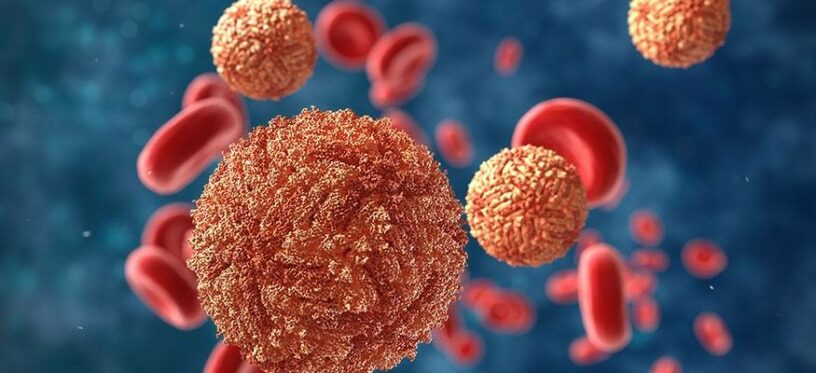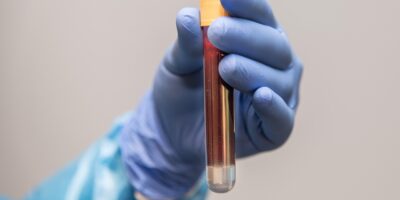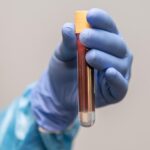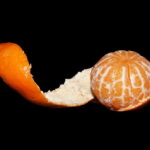Enzyme-linked assays are commonly used in labs to detect specific substances in samples with high accuracy. They work by using enzymes to create a signal that indicates the presence of the substance. However, these tests have some drawbacks. They require expensive, bulky equipment, knowledgeable operators, and involve multiple time-consuming steps, making them impractical for point-of-care (POC) testing. POC devices are beneficial for obtaining quick results, which can be used for various applications including healthcare, environmental monitoring, food safety, and security.
Lateral flow assays (LFA), like the ones used in pregnancy and COVID tests, offer a more user-friendly approach. They are easy to use, can be done anywhere, are cost effective, can be mass manufactured, and are disposable. In spite of these benefits, LFAs are less precise than enzyme-linked assays, and the results are often based on a vial readout that is not always as easy to interpret as a straightforward “yes” or “no”.
With the goal of creating an assay that improves on current LFA technology, gives accurate results quickly, and is inexpensive and user-friendly, researchers developed the microfluidic enzyme-linked paper analytical device (µEL-PAD). This device combines the accuracy of enzyme-linked assays with the user-friendliness of lateral flow tests through the use of an adjustable 3D vertical structure, magnetic beads to enhance performance, and a digital reading for clarity.
This research worked specifically with enzyme-linked oligonucleotide assays (ELONAs) for the detection of Staphylococcus epidermidis DNA. DNA amplification is crucial when performing an assay to ensure that there is a large enough concentration present in the sample for detection. For tests involving nucleic acids, Polymerase chain reaction, otherwise known as PCR, is the standard method for DNA amplification. PCR’s temperature neutral alternative, Recombinase polymerase amplification (RPA), is quick and simple to manage. RPA was used in place of PCR for this experiment in an effort to be more agreeable with POC use.
The researcher’s began by amplifying S. epidermidis DNA by RPA. Next, a bead complex was crafted with a combination of special magnetic beads that encourage nucleic acid isolation, the RPA product, and antiFITC-horseradish peroxidase (HRP). This bead complex was then placed onto a nitrocellulose membrane in the µEL-PAD. Other layers in this device include removable intermediate layers and a colour changing substrate (TMB) on filter paper. When the intermediate layers are removed, the TMB in the final detection layer interacts with the HRP in the nitrocellulose membrane to produce a measurable colour change. This colour change is then quantified with an open-source smartphone software that gives a clear “yes” or “no” result. It should also be pointed out that the use of a nitrocellulose membrane eliminated the need for a magnetic separation of the bead complexes which would require a laboratory setting, making this device more POC friendly.
The key innovations that set the µEL-PAD apart from conventional LFAs is the immobilisation of enzyme-linked complexes (magnetic bead complexes) on a membrane and the interaction of those complexes with a colour changing substrate (TMB on filter paper). It was also demonstrated that TMB can be stored on paper as a ready-to-use substrate. The superior performance of the µEL-PAD was demonstrated by a comparison with a traditional LFA for the detection of S. epidermidis genomic DNA. The µEL-PAD displayed an improvement in the lowest concentration of infectious DNA reliably detectable, roughly 70 to 1000 times lower than the LFA. The µEL-PAD’s lowest detection level concentration was less than 10 genetic copies per microliter. At this concentration, a blue tinge is clearly observed and can be translated into a “yes” or “no” result through its linkage with an imaging smartphone software. This is in comparison LFAs that require roughly 709 copies per microliter to give an undeniably positive result. Examples of the readouts from µEL-PADs, as well as LFAs can be seen in the images below.


The researchers point out that this device can be altered to be more effective for other forms of assays by swapping out the magnetic beads for other particles, molecules, or cells which have a predetermined size and can be filtered by the nitrocellulose membrane. This device is constructed in a vertical sandwich format, but can be reconfigured to work in direct, indirect, or competitive formats as well, which may work better for other tests.
The µEL-PAD offers significant benefits compared to conventional LFAs, including enhanced sensitivity and the capability for precise quantitative analysis. Furthermore, it boasts cost-effectiveness and user-friendliness, making it an ideal choice for point-of-care testing.
Toldrà A, Georgios Chondrogiannis, Mahiar Hamedi. A 3D paper microfluidic device for enzyme‐linked assays: Application to DNA analysis. Biotechnology Journal. 2023 Jun 1;18(9).








